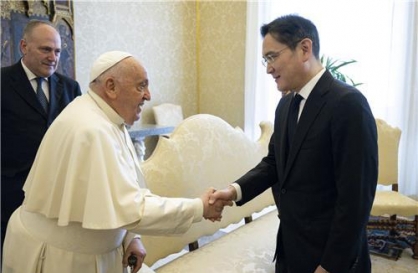As of 2011, women teachers accounted for 75.8 percent in the nation’s primary schools, 66.8 percent in middle schools and 46.2 percent in high schools. These figures represent significant rise in the presence of female teachers at primary and secondary schools since a decade ago, when the respective figures were 68 percent, 59 percent and 35 percent.
With violence in school reportedly growing in recent years, occasionally causing suicides of young students after extended suffering from bullying and sexual abuses, education analysts and parents are thinking of the correlativity between the two trends. Many conclude that the tenderness of women teachers is not fit to control tough, trouble-making students, particularly those in puberty.
Some others retort that women teachers can give better counseling for problem students, effectively preventing disorderly activities and promoting healthy development of personalities. Both are right, but the problem is that the supply situation can hardly be altered even if schools need more male teachers.
Graduates from teachers’ colleges producing primary school teachers and education colleges of universities training teachers for middle and high schools are assigned to specific schools through the state-run appointment examinations. As in other professional courses, women outcompete men in the written tests and more of them are appointed. Seoul has some of the most extreme cases: Seven of its 591 primary schools lack a single male teacher and 15 have only one among their entire teaching personnel.
The Korea Federation of Teachers’ Associations called for “educational and social debates” to increase the proportion of male teachers, noting that the current serious imbalance contributes to the worsening violence in schools and students’ distorted understanding of gender-specific roles in society. But the organization suggested no practical steps other than more effective training of female teachers on student control.
We know the problem but do not have a solution right now. Giving advantage points to male teacher applicants who completed military service was once implemented but was ruled unconstitutional. So a long-term plan has to be established to secure a certain portion of male students at teachers colleges. If indirect measures prove ineffective, legislative steps should be taken to apply the general male-female population ratio in the recruitment of teachers.
KFTA surveys revealed that 90 percent of teachers (with the respondents overwhelmingly female) supported having local education office chiefs keep the proportion of female teachers within 70 percent of total personnel at each level of schools.
With violence in school reportedly growing in recent years, occasionally causing suicides of young students after extended suffering from bullying and sexual abuses, education analysts and parents are thinking of the correlativity between the two trends. Many conclude that the tenderness of women teachers is not fit to control tough, trouble-making students, particularly those in puberty.
Some others retort that women teachers can give better counseling for problem students, effectively preventing disorderly activities and promoting healthy development of personalities. Both are right, but the problem is that the supply situation can hardly be altered even if schools need more male teachers.
Graduates from teachers’ colleges producing primary school teachers and education colleges of universities training teachers for middle and high schools are assigned to specific schools through the state-run appointment examinations. As in other professional courses, women outcompete men in the written tests and more of them are appointed. Seoul has some of the most extreme cases: Seven of its 591 primary schools lack a single male teacher and 15 have only one among their entire teaching personnel.
The Korea Federation of Teachers’ Associations called for “educational and social debates” to increase the proportion of male teachers, noting that the current serious imbalance contributes to the worsening violence in schools and students’ distorted understanding of gender-specific roles in society. But the organization suggested no practical steps other than more effective training of female teachers on student control.
We know the problem but do not have a solution right now. Giving advantage points to male teacher applicants who completed military service was once implemented but was ruled unconstitutional. So a long-term plan has to be established to secure a certain portion of male students at teachers colleges. If indirect measures prove ineffective, legislative steps should be taken to apply the general male-female population ratio in the recruitment of teachers.
KFTA surveys revealed that 90 percent of teachers (with the respondents overwhelmingly female) supported having local education office chiefs keep the proportion of female teachers within 70 percent of total personnel at each level of schools.






![[Weekender] Korean psyche untangled: Musok](http://res.heraldm.com/phpwas/restmb_idxmake.php?idx=644&simg=/content/image/2024/05/02/20240502050841_0.jpg&u=)



![[Herald Interview] ‘Time to Be Strong’ follows retired K-pop idols’ self-discovery](http://res.heraldm.com/phpwas/restmb_idxmake.php?idx=644&simg=/content/image/2024/05/03/20240503050550_0.jpg&u=)






![[Herald Interview] Director of 'Goodbye Earth' aimed to ask how we would face apocalypse](http://res.heraldm.com/phpwas/restmb_idxmake.php?idx=652&simg=/content/image/2024/05/03/20240503050732_0.jpg&u=)
